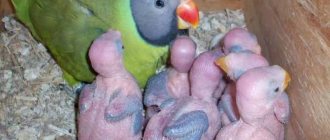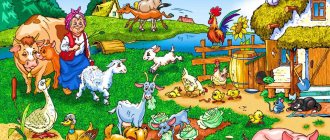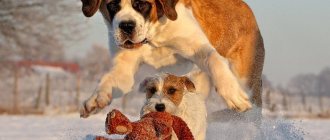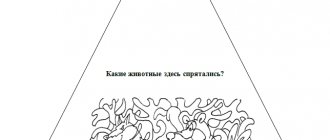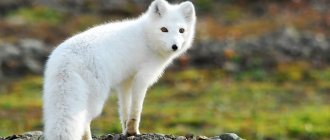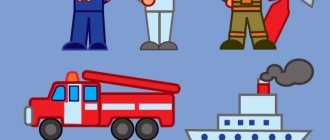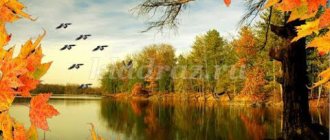Tasks
: identify and systematize children’s ideas about domestic animals; establish the relationship and dependence of animal life on humans; formulate the concept of “pets”; learn to convey the animal’s habits in movements and gestures under the teacher’s commentary; develop thinking, imagination, interest in pets; develop a caring attitude towards animals.
Material
: illustrations depicting a cow, horse, goat, sheep. Pictures from the series “Wild Animals”; gaming soundbar; master's cap; ball.
Progress of the lesson
— Close your eyes, listen (Game sound panel “Farm Frenzy”). What did you hear? (animal voices). How can you call them, in one word? (Pets); What are they? (Necessary, useful, kind.)
— Reading a poem:
Look at the trotter! His sides are shiny, He digs the ground with his hoof, A golden flame curls from his widened nostrils - He wants to gallop faster! The lush, thick mane flies away beautifully. The look is hot, fiery - How good is the bay trotter!
- Does anyone know who the trotter is? That's right, a trotter is a breed of horse.
— The master’s (child) story about a horse.
A horse is a beautiful, noble animal. She has a large body, strong slender legs ending in hooves, a thick, lush mane and tail, erect ears and large intelligent eyes. The horse is a faithful servant and companion of man.
Village horses work long summer days and graze in green meadows at night.
Question to the master: “What do horses eat? (In summer - grass, in winter - hay and oats.)
— Training "Horses".
Our legs flashed, We will jump along the paths. But be careful, don’t forget what to do.
(tongue exercise - “Tsok, tsok, tsok.”)
- Mystery:
When she’s hungry she moos, when she’s full she chews, she gives milk to the little kids. (Cow)
— The master’s (child) story about a cow.
The cow's body is wide, with rounded swollen sides, short legs, a long and strong tail, reminiscent of a panicle, with which it drives away annoying flies and horseflies. The cow has a large head with upturned horns, erect ears with which she can hear well, and large dark brown velvety eyes. Having an excellent sense of smell, they easily distinguish edible herbs from inedible ones.
Cows are slow and calm.
— Question to the master: “What do cows give us?” . (Milk, meat).
Educator: “The people have composed many proverbs and sayings dedicated to the cow, in which they lovingly call the cow “nurse”, “mother cow”. What proverbs do you know about the little cow?
- “If there was a cow, there would be milk.”
- “A cow in the yard means food on the table.”
- “If there is a cow in the yard, you will be both fed and clothed.”
- “Black is Burenushka, but white milk.”
— Fizminutka: “Piglet.”
Piglet Piglet. I rested myself in a barrel. He stood up on his feet, stretched, and then sat down, bent down, and jumped a little, and walked in place. And then he lay down again, but on his left side.
- Mystery:
He walks and walks, shaking his beard, asking for herbs: And then he brings milk. (Goat)
— The master's (child) story about a goat.
The goat is one of the first wild animals to be domesticated by humans. A goat is a small animal, its body is covered with thick hair. The goat's legs are tall and slender, and its tail is short. The goat has large gray-green eyes, erect ears, and its head is decorated with sharp horns. These animals have good eyesight, hearing and smell, they are graceful and agile, they run fast, jump well, and can climb steep mountain slopes.
They nibble grass in meadows and fields, eat leaves and young shoots of trees and shrubs.
Educator:
Goat's milk is very healthy and tasty, its composition is very close to women's milk; people fed infants with goat's milk. What is made from goat's milk? (Cheese, feta cheese, cottage cheese and sour cream are made from it.)
— Finger gymnastics “Cat Matryoshka”
— Game “Which picture is the odd one out and why?”
On the easel there are pictures of wild animals (a bear, a hare, a squirrel, a fox, and a domestic animal - a sheep).
— The master’s (child) story about a sheep.
A sheep is a small animal. Her body is covered with thick curly hair.
The sheep has slender legs with hooves, a steep, convex forehead and small horns.
Domestic sheep are cautious, timid animals and always move in a herd.
Sheep know their owner well, obediently run when called, and love to listen to the melodic tunes of shepherds' pipes. Sheep live quite a long time, 13-14 years.
— Educator: “What do sheep and rams give to people (magnificent wool, soft and warm, from which sweaters and blouses, shawls, scarves, mittens and hats are knitted.)
- Game “Who has who?”
— Relaxation training “Cats”.
Imagine that you are lazy cats and kitties. Imagine that you want to stretch. Extend your arms forward. Raise them high above your head. Now lean back. Feel your shoulders tense. Stretch as hard as possible. Now drop your arms to your sides.
Let's stretch some more. Stretch your arms in front of you, lift them up, above your head, and throw them back as far as possible.
Stretch harder. Now quickly drop your hands. Let's stretch. Like real cats. Let's try to reach the ceiling. Now quickly lower your hands and let them fall on their own. Feel relaxed, warm.
Summary of the lesson.
Summary of the lesson on the surrounding world “Pets” in the senior group
Anastasia Pashkova
Summary of the lesson on the surrounding world “Pets” in the senior group
Abstract of GCD Cognitive development (social environment )
Topic: " Pets "
Goal: creating a social development situation in the process of consolidating children’s knowledge about pets
Objectives: 1. To provide conditions for expanding and enriching children’s understanding of cats and dogs and other pets
2. Develop logical thinking, attention, visual memory, ingenuity, and the ability to give reasons for one’s statements.
3. Foster a sense of care and love for your pet , a sense of responsibility for your pet
Preliminary work: conversation about animals, examination of illustrations on the topic: “ Pets ”
.
photographs or drawings of your pets .
Developmental subject-spatial environment: illustrations, models of domestic animals
Technologies (methods)
: verbal, gaming, visual, health-saving and gaming technologies, encouragement, analysis of children.
